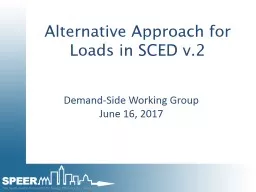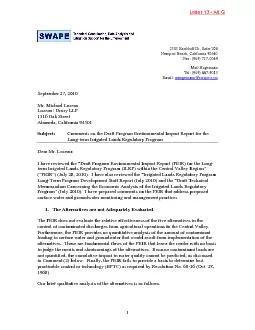PPT-Alternative Approach for Loads in
Author : marina-yarberry | Published Date : 2019-11-07
Alternative Approach for Loads in SCED v2 DemandSide Working Group June 16 2017 Obstacles to DR Participation in RTM Registration Aggregation Telemetry Operating
Presentation Embed Code
Download Presentation
Download Presentation The PPT/PDF document "Alternative Approach for Loads in" is the property of its rightful owner. Permission is granted to download and print the materials on this website for personal, non-commercial use only, and to display it on your personal computer provided you do not modify the materials and that you retain all copyright notices contained in the materials. By downloading content from our website, you accept the terms of this agreement.
Alternative Approach for Loads in: Transcript
Download Rules Of Document
"Alternative Approach for Loads in"The content belongs to its owner. You may download and print it for personal use, without modification, and keep all copyright notices. By downloading, you agree to these terms.
Related Documents














